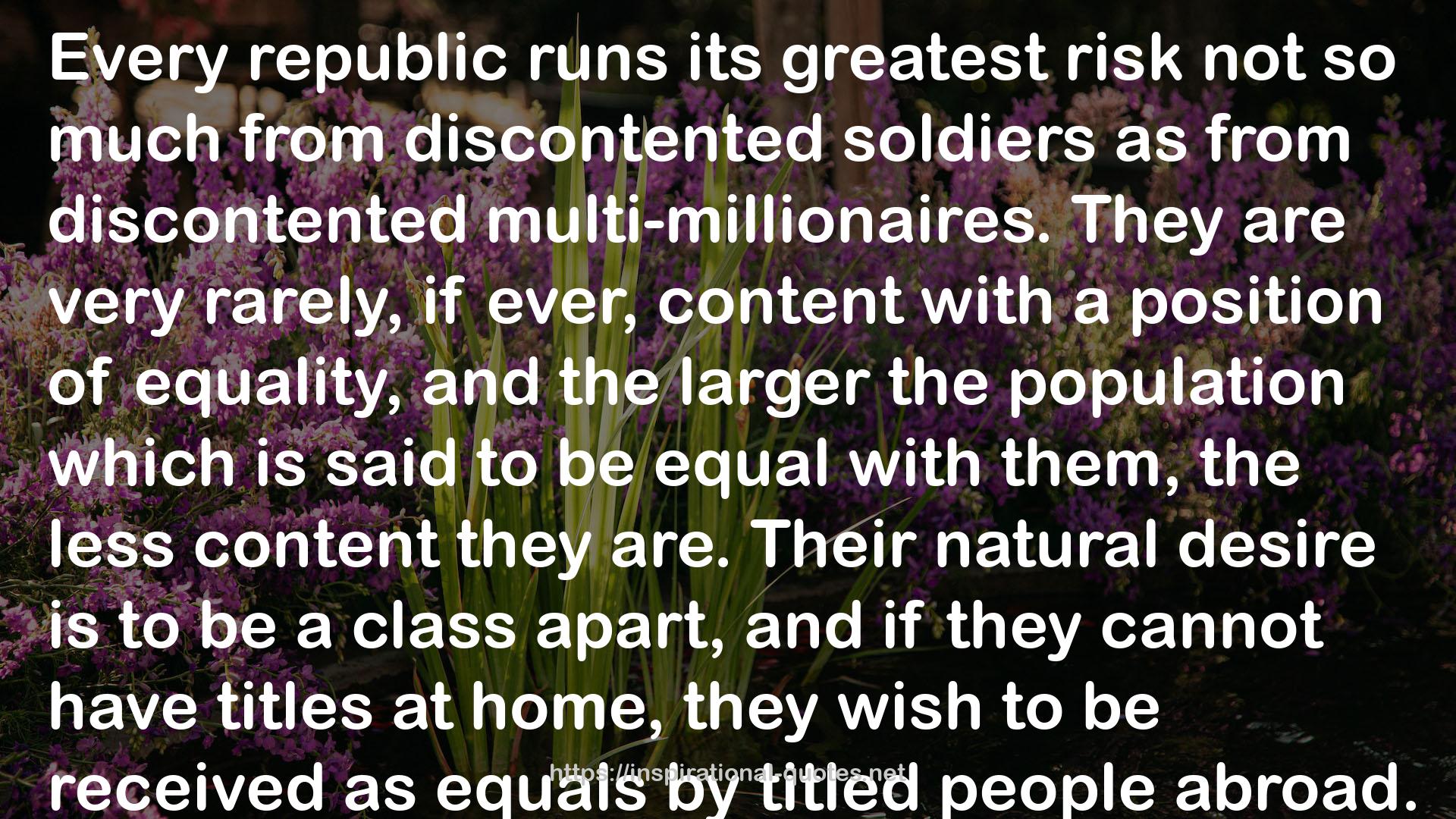21
" Every republic runs its greatest risk not so much from discontented soldiers as from discontented multi-millionaires. They are very rarely, if ever, content with a position of equality, and the larger the population which is said to be equal with them, the less content they are. Their natural desire is to be a class apart, and if they cannot have titles at home, they wish to be received as equals by titled people abroad. That is exactly our present position, and would be the end of the American dream. All past republics have been overthrown by rich men, or nobles, and we have plenty of Sons of the Revolution ready for the job, and plenty of successful soldiers deriding the Constitution, unrebuked by the Executive or by public opinion. "
― Kory Stamper , Word by Word: The Secret Life of Dictionaries
34
" Take the oft-repeated injunction to get “its” and “it’s” straight. Everyone claims it’s remarkably easy to remember that “its” is possessive and “it’s” is a contraction. But logic tells us that in English, ’s attached to a noun signals possession: the dog’s dish, the cat’s toy, the lexicographer’s cry. So if English is logical, and there are simple rules to follow, why doesn’t “it’s” signal possession? We know that ’s also signals a contraction, but we don’t have any problems with differentiating between “the dog’s dish” and “the dog’s sleeping”—why should we suddenly have problems with “it’s dish” and “it’s sleeping”? This type of grammar often completely ignores hundreds (and, in some cases, well over a thousand) years of established use in English. For “it’s,” the rule is certainly easy to memorize, but it also ignores the history of “its” and “it’s.” At one point in time, “it” was its own possessive pronoun: the 1611 King James Bible reads, “That which groweth of it owne accord…thou shalt not reape”; Shakespeare wrote in King Lear, “It had it head bit off by it young.” They weren’t the first: the possessive “it” goes back to the fifteenth century. But around the time that Shakespeare was shuffling off this mortal coil, the possessive “it” began appearing as “it’s.” We’re not sure why the change happened, but some commentators guess that it was because “it” didn’t appear to be its own possessive pronoun, like “his” and “her,” but rather a bare pronoun in need of that possessive marker given to nouns: ’s. Sometimes this possessive appeared without punctuation as “its.” But the possessive “it’s” grew in popularity through the seventeenth and eighteenth centuries until it was the dominant form of the word. It even survived into the nineteenth century: you’ll find it in the letters of Thomas Jefferson and Jane Austen and the speechwriting notes of Abraham Lincoln. This would be relatively simple were it not for the fact that “it’s” was also occasionally used as a contraction for “it is” or “it has” (“and it’s come to pass,” Shakespeare wrote in Henry VIII, 1.2.63). Some grammarians noticed and complained—not that the possessive “it’s” and the contractive “it’s” were confusing, but that the contractive “it’s” was a misuse and mistake for the contraction “ ’tis,” which was the more standard contraction of “it is.” This was a war that the pedants lost: “ ’tis” waned while “it’s” waxed. "
― Kory Stamper , Word by Word: The Secret Life of Dictionaries

